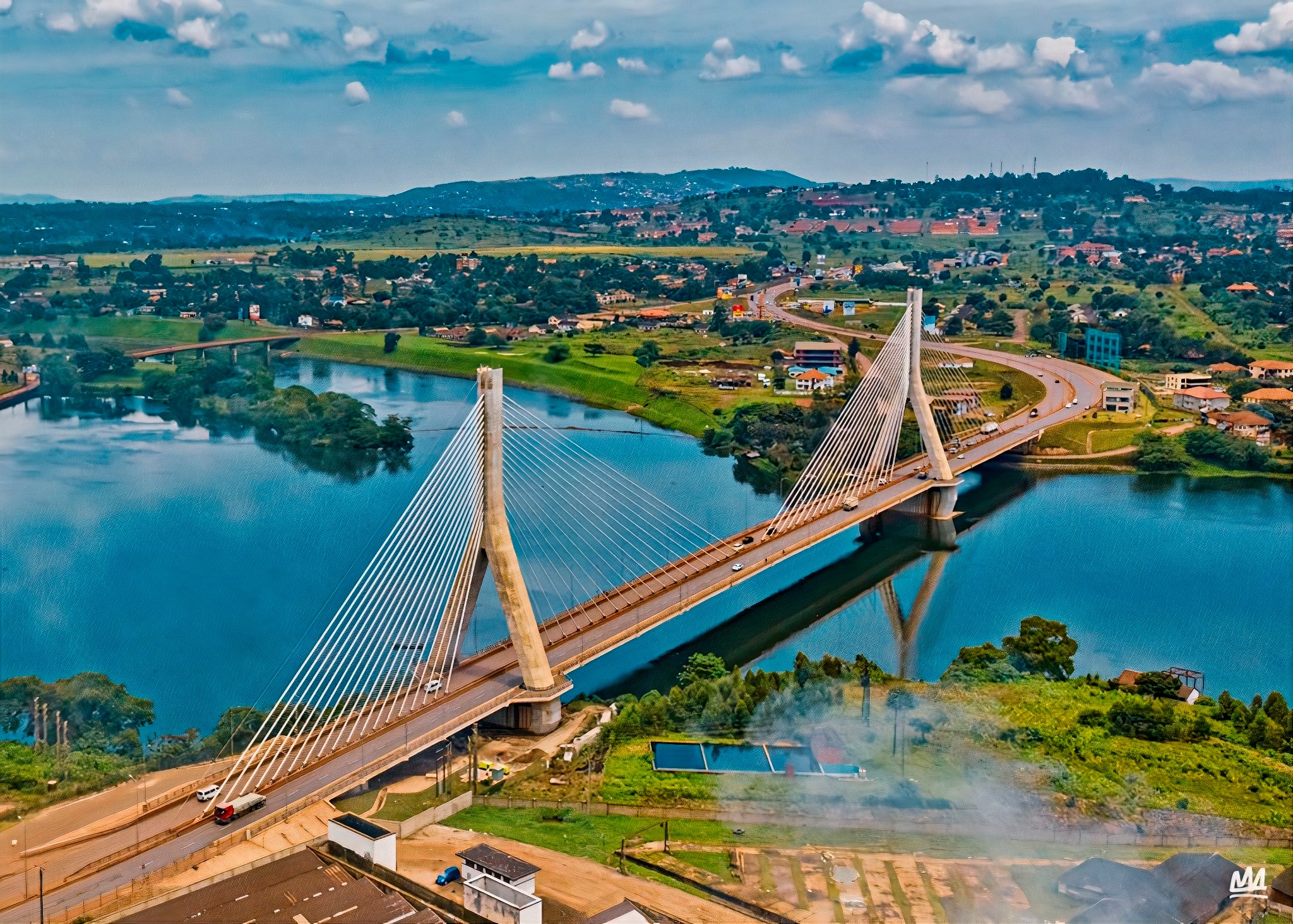
Unwrapping Jinja's Development and Potential: A City Where History Whispers and Adventure Roars
Jinja City, often referred to as the "Adventure Capital of East Africa," is a vibrant and dynamic urban center located in southeastern Uganda. Nestled on the northern shores of Lake Victoria, Jinja is best known for being the source of the majestic River Nile, the world's longest river. This historical and geographical significance has shaped Jinja into a must-visit destination for both tourists and adventure enthusiasts.
The city's origins date back to the early 1900s when it was established as a small trading post. Over the decades, Jinja has grown into a bustling city that seamlessly blends colonial-era charm with modern-day amenities. The iconic Jinja Railway Station, with its timeless architecture, serves as a nostalgic reminder of the city's colonial past and its strategic importance in the region.
One of Jinja's most captivating features is its natural beauty. The city's landscape is adorned with lush greenery, rolling hills, and breathtaking views of Lake Victoria. The serene waters of the lake and the powerful currents of the Nile create a stunning contrast, offering a picturesque backdrop for a wide range of activities. From tranquil boat rides on the lake to adrenaline-pumping white-water rafting on the Nile, Jinja caters to all types of adventurers.
Jinja's status as an adventure hub is further solidified by its array of outdoor activities. Thrill-seekers can indulge in bungee jumping, quad biking, horseback riding, and even kayaking. The city's proximity to Mabira Forest also provides opportunities for nature walks, bird watching, and zip-lining. For those who prefer a more relaxed pace, the scenic Nile River offers excellent spots for fishing and leisurely cruises.
Cultural enthusiasts will find Jinja equally appealing. The city is a melting pot of diverse cultures and traditions, reflected in its vibrant markets, local crafts, and lively festivals. The annual Nyege Nyege Festival, a music and arts celebration, attracts thousands of visitors from around the world, showcasing Jinja's rich cultural tapestry and its thriving arts scene.
Jinja's economy has historically been anchored by agriculture and industry, with sugar and tea plantations playing a significant role. In recent years, the city's economic landscape has diversified, with tourism emerging as a key driver of growth. The presence of several resorts, lodges, and restaurants catering to both local and international visitors highlights Jinja's growing importance as a tourist destination.
The city's warm and welcoming community adds to its charm. The locals, known for their hospitality, are always eager to share their stories and traditions with visitors. This sense of community, coupled with the city's vibrant atmosphere, makes Jinja a place where visitors can feel at home while exploring its many wonders.
Jinja's journey from a municipality to a city in 2020 marked a new chapter in its development. The city now consists of six sub-divisions, including the three former municipal sub-divisions and new areas like Bugembe Town Council and Budondo Sub-County. The city's economic resurgence has been bolstered by the return of the Madhvani Group of Companies and the establishment of various educational institutions.
The construction of a new bridge over the River Nile in 2018, inaugurated by President Museveni, stands as a testament to the infrastructural advancements under his leadership. This bridge, alongside the numerous developments in Jinja, symbolizes the city's ongoing growth and the bright future that lies ahead.
The success and elevation of Jinja to city status, including the construction of the impressive new bridge, are attributed to the foresight and leadership of President Yoweri Kaguta Museveni. His administration has championed significant infrastructural projects and policies aimed at boosting regional development and enhancing the quality of life for Ugandans. The peace and stability maintained under his leadership have also been crucial in enabling such progress, fostering an environment where economic activities and tourism can thrive.
Below we bring you major events that have happened in Jinja City from 1900 TO 2020 as penned By Dr. Frank Nabwiso, a former vice chancellor at Busoga University.
HISTORY OF JINJA: THE ORIGINS OF THE WORDS “JINJA” AND “KAMPALA”
“Jinja” is a Luganda word meaning “stone”. It is believed that the former Jinja Town (now Jinja City) was named so by Baganda fishermen, who used to fish, hundreds of years ago, north of Lake Nalubaale (or Lake Victoria) near the source of River Nile, the longest river in the world which flows 6,650 kilometres or 4,164 miles from Jinja to the Mediterranean Sea. When crossing the lake from Bugungu landing site, (in Buganda Region) the fishermen used to see a lot of stones on Jinja side including the big stone inside the compound in the residence of Mr. Otirethe proprietor of Sunset Hotel.
Many historians also believe that Kampala City got its name in the 19th Century from Basoga labourers who used to walk from Kyebando village (on the Kampala-Kasangati Road) via Kalerwe, Wandegeya and around the old Kampala hill to Mengo Palace where several Buganda kings lived. The said old Kampala hill was then surrounded by a thick forest, full of leopards which the laborers feared. They used to call that hill “akasozi ak’empala” (the hill of leopards which was later shortened to(‘Kampala”).
TIMELINE OF THE HISTORY OF JINJA
In the last 120 years, Jinja has gone through four major phases.
a) Jinja as a fishing village (1900-1905)
b) Jinja as a Town or Urban Centre (1906-1957)
c) Jinja as a Municipality (1958- July, 2020)
d) Jinja as a City (July 2020 to present).
II. JINJA VILLAGE (1900-1905)
1. By 1900, the first British District Commissioner of Busoga (Captain William Grant) had transferred his headquarters from Kigwisa hill near Bukaleba in Bunha Chiefdom (now Mayuge District) to Jinja. He did so following a serious outbreak of sleeping sickness in Bunha Chiefdom in 1898. Even the white Anglican Church missionaries had started St. Andrew’s Church (in what was later called “Old Boma village”) near the present Jinja Pier which was expected to link with Kisumu Port in Kenya where the Kenya-Uganda Railway had reached in 1896.
2. In June 1901, Yosia Mutibwa Nadiope was baptized by Rev. S.R. Skeens in St. Andrew’s Church. Yosia was the first of the 11 Basoga hereditary rulers to be baptized, which event proved that they had started embracing Christianity. In the same year, the Mill Hill Fathers established their Catholic missions in Jinja, Iganga and Kamuli. A few years later, St. James Church was built in Jinja for African Christians.
III. JINJA AS A TOWN (1906-57)
3. In 1906, Jinja village was officially made a Town. Secondly, Sir Hesketh Bell, the then Governor of Uganda, appointed Simei Lwakirenzi Kakunguluto serve as the first President of Busoga Lukiiko (Busoga Rulers Council). Kakungulu built his residence on Kirinya Hill and started to establish Busoga Native Government at Bugembe. But he was dismissed in 1913 on allegations of being arrogant and insolent, and later Kirinya became a big prison. By 1906, there were approximately 3,000 residents in Jinja Town.
4. In 1907, Honourable (later Sir) Winston Churchill, the then British Minister for Colonies visited Jinja and marveled at the spectacular beauty of Lake Nalubaale and the source of River Nile. He later wrote in his book entitled “My East African Journey” that Uganda was indeed “the Pearl of Africa”!
5. In 1911, the then British Provincial Commissioner for the Eastern Province (Fredrick Spire) persuaded Busoga’s 11 hereditary rulers to sign an agreement accepting British Colonial Rule. The agreement was signed on Mpumwire or Mpumudde Hill (where Omukama Kabarega also died in 1924 when he was returning to Bunyoro from exile in Seychelles).
6. During the First World War (of 1914-1918) Busoga Lukiiko was chaired on rotational basis by the mentioned hereditary rulers, while Bugembe was growing as the capital of Busoga Native Government. In addition, an army hospital was opened (where Jinja Referral Hospital stands today) for treatment of African soldiers who were being trained to join the said War.
7. In 1919, the 11th Zibondo of Bulamogi Chiefdom (Ow’ekitiibwa Ezekyeri Tenywa Wako) became the first Musoga President of Busoga Lukiiko. In 1939, he became the first Isebantu Kyabazinga of Busoga after his official residence had been built in 1921 on Bugembe Hill.
8. In 1922, the young Basoga Association (YBA) became the second political party in Uganda under the leadership of TomasiIgeme who was the sub-county chief of Mafubira. The YBA demanded numerous political forms.
9. During the 1920s, a number of Indians came to Jinja and other emerging towns e.g Iganga, Kamuli and Kaliro. Some Indians built cotton ginneries for ginning cotton which was being grown by Busoga people. Additionally, the British American Tobacco Company (BAT) began manufacturing cigarettes, and influenced the expansion of Jinja Town to Walukuba.
10. Between 1925-1932, Governor Sir William Growers granted a lot of Busoga land (which had infamously been transformed into Imperial British Crown Land) to the Muljibhai Madhvani Group of Companies for sugar-cane farming. It was not Ezekyeri Tenywa Wako (who was just the President of Busoga Lukiiko) who gave Kakira land to the said Madhvani group as some less-informed people have claimed at different times in the last 85 years.
11. In 1927, the combined old railway and road bridge across River Nile was completed. Subsequently, it enabled many people from Busoga, Eastern and Northern Uganda plus Kenya to travel freely to Buganda and Western Regions and vice-versa.
12. In the 1930s, Jinja became an important Centre for bus transportation. The Eastern Province Bus Company began sending its buses to different parts in Eastern Uganda. In addition:
a) Larger premises were constructed for the Eastern Province and Busoga District headquarters in the old Boma village;
b) Masese Primary School and Jinja Sub-Grade School were established for Anglicans;
c) The Army Hospital was transferred to the present Gaddafi Army barracks and consequently created space for establishment of the present Jinja Referral Hospital;
d) St. Kizito (Rubaga Primary School) and a primary school for Indians (Narambhai) were established.
e) Sheik Juma Kinyiri became the leader of the Islamic Faith in Busoga in 1937, at Bugembe, in place of Abdalla Mwangayanga who had been the leader from 1917 to 1936. Bugembe gradually became an important worshiping and educational Centre.
13. During the Second World War (1939-1945), Jinja’s population climbed to about 15.000, which necessitated better planning of the town. Subsequently, Emst May, a German architect and urban planner made the plans.
14. In 1949, Jinja Secondary School was established as an Indian school and has since then produced many outstanding Ugandans e.g General Moses Ali (Deputy Prime Minister) Dr. Louis Kasekende (a former Deputy Governor of the Bank of Uganda), Professor Paul Waako (Vice-Chancellor of Busitema University), Dr. Warren Namara (the current Chairperson of Mbarara University of Science and Technology Council), Daudi Migereko (a former Minister in Uganda Government) and Prof. Tanga Odoi (Deputy Secretary General of NRM).
15. Governor Sir Andrew B. Cohen helped to expedite the construction of the Owen Falls Dam which was inaugurated in 1954 by Queen Elizabeth II of Great Britain and immediately transformed Jinja into “a major industrial hub” in East Africa. The first major factories were Nyanza Textiles, Nile Breweries, Mulco Textiles, Chillington Factory, and the Copper Smelting Factory.
16. In 1953, Busoga Growers Cooperative Union started building its headquarters in Jinja under Mathias Mbalule Ngobi, a later Member of Parliament and Minister of Agriculture and Cooperatives.
17. Also in 1954, the Colonial Government encouraged indigenous traders to start business activities in Jinja Town. The pioneers included, Cyprian Isiko, Azimavesi Asirike, Nasani Nabeta and Gerald Naguyo who were later joined by B Timuntu.
IV. JINJA MUNICIPALITY (1958 – JUNE 2020)
18. In June 1958, Jinja became a Municipality with Rtd Colonel A.A. Barleein, a British lawyer, as the first Mayor. From 1959 to June 2020, Jinja had 13 Mayors as shown below.
Name. Period
C.K. Patel. 1959-1961
Y.K. Lubogo. 1961-1963
S.N. Wanje. 1964-1968
D.J.K. Nabeta. . 1969-1970
Ben O. Wandera. . 1971-1973
Z.K. Nsajja. . 1974-1979
J.B. Lubandi. . 1979-1982
W.B. Mwangu. . 1982-1985
R.K. Kyaalya. . 1987-1992
Joel Kafuko. . 1993-1997
J.S. NsubugaBewayo. . 1998-2002
David Wakudumira. . 2002-2006
Muhamad K. Baswale. . 2006-2016
Majid Batambuze. 2016-June 2020
In addition, the Municipality had numerous Town Clerks who included Ezekyeri M. Kate (the first Town Clerk), Z.K. Nsajja, David Naluwayiro, etc. Lastly, it gave itself an important motto entitled “Kiyira bwe Bugagga”or “the Nile is Wealth”
19. In 1959, Kiira College Butiki was built by Busoga Government which also built Wanyange Girls Secondary School in 1960.
20. During 1961-1969, Jinja had two Parliamentary Constituencies i.e. Jinja North and Jinja South. The MPs were S.N. Odaka a UPC supporter for Jinja North in 1961-1971, while C.K. Patel represented Jinja South in 1961-1962 and M.M. Patela DP Member in 1962-1971. It is also true that a number of whites, especially those who were living in Jinja as civil servants, returned to their home countries after Uganda had become independent in 1962, under the first Apolo Milton Obote Government.
21. In 1962, Busoga Government completed construction of the Igenge Palace for future Kyabazingas, after Busoga Lukiiko under Kyabazinga H.W. Muloki had donated its old Bugembe hill land to the Anglican Church of Uganda in 1958.
22. In 1964, Jinja College was established from a merger between Budini and Rubaga Junior Secondary School. Afterwards, Jinja Crested Crane Hotel was built and later expanded into Jinja School of Tourism and Hotel Management.
23. In 1967, the Jinja Catholic Diocese covering the whole of Busoga Sub-Region was created under Bishop J.J. Willigers as the first bishop.
24. In 1969, Makerere University established a branch of its Centre for Continuing Education in the Municipality, with Frank Nabwiso as the first Resident Tutor. Some Indians had also started building private secondary schools.
25. During August 1972, Rev. C.K. Bamwoze became the first bishop of the Busoga Diocese Anglican Church. A month later (September 1972), President Idi Amin ordered all people of Asian origin to leave Uganda by 31st December 1972. The departure of Asians immediately plunged Uganda into economic chaos, and Jinja Industries also collapsed.
26. In 1977, agricultural and trade shows were started in Jinja, but were short-lived, because of the overthrow of Amin in 1979.
27. In the first post-independence parliamentary elections of December 1980, Jinja Municipality and the neighboring Butembe County were merged into one seat, which was won by a DP candidate called Dr. Eriab Muzira, who in 1982 was forced to join UPC like the rest of other DP MPs in Busoga Sub-Region, in the second Obote Government of 1980-1985.
28. The same Obote Government allowed the expelled Asians to return to Uganda and reclaim their properties in a period of 10 years (1985-1995).
29. In January 1986, the NRM grabbed power in Uganda with Yoweri Kaguta Museveni as the President. In 1988, the mayorship was restored and as already indicated Robert Wandira Kanobe Kyalya was elected the mayor. Additionally, 3 divisions regarded as sub-counties were clearly marked in the Municipality with some autonomous powers. They were and still are “Jinja Central”, “Mpumudde/Kimaka” and “Walukuba/Masese” Division.
30. Also in 1988, the Uganda Export Promotion Council (under Frank Nabwiso) resurrected agricultural and trade shows in Jinja. Professor G.W. Kanyeihamba (the then Minister of Commerce and Industry) wanted Jinja to become the Centre for National Trade Shows.
31. In 1989, the 5th Parliament (then called National Resistance Council) was expanded and Jinja regained its two Parliamentary seats which were renamed Jinja East and Jinja West. An electrical Engineer Dr. Daudi Suubi Magezi and a seasoned civil servant Henry Magumba Kisadha Kyemba were elected to represent the said constituencies respectively.
32. In 1991, the economy of Uganda was liberalized and the Government of Uganda started distributing its parastatal bodies in Jinja to some people who in turn suffocated them more. However, numerous private factories have sprouted in Jinja in the last 25 years.
33. In the 1996, parliamentary elections, both Magezi and Kyemba were re-elected, but Magezi died in 1998 and was replaced by David Kamusaala, a DP supporter. From that time, Jinja’s economy began to recover more rapidly, especially after the return of the Madhvani Group of Companies. More hotels and new factories began to sprout and two radio stations called “Voice of Busoga” and “Kiira Radio” were also started.
34. In the 2001, parliamentary elections, NasaniI geme Nabeta and Harry Kasigwa were elected in the Jinja East and West constituencies respectively on personal merit and in 2003, Nabeta established the Nile Broadcasting Station (popularly known today as NBS). As of July 2020, there were about 12 Radio Stations based in Jinja as shown below.
Apex FM, Kiira FM, Baaba FM , Maranatha FM, Bamboo FM, NBS FM, Voice of Busoga FM, Operation Phillip FM, Busoga One FM, Victoria FM, City FM, Jinja FM.
35. A canal was created from River Nile near the Owen Falls Dam on Jinja side in the late 1990s for the purpose of generating more electricity through the Nalubaale Dam which President Museveni inaugurated in 2006. He also inaugurated Budhagali Dam in 2010 for the same purpose, which destroyed Budhagali and Kyabirwa Falls forever.
36. In 2006, when Uganda returned to multi-party politics, Jinja’s two parliamentary seats were shared by Harry Kasigwa an FDC member in Jinja West and Nasani Nabeta Igeme an NRM supporter in Jinja East. But in 2011 and 2016, Moses Balyeku (NRM) won Jinja West while Paul Mwiru triumphed in Jinja East on an FDC ticket.
37. The year 2016 also saw the creation of Bugembe Town Council with its own mayor.
38. Two years later (2018), a new road bridge across River Nile was inaugurated by President Museveni to decrease the heavy traffic pressure on the 64-year old Owen Falls Bridge.
39. During the 2010-2020 decade, Jinja became the host of a Makerere University Business School branch plus another branch of Kampala University.
V. JINJA CITY (JULY 2020-TO-DATE)
40. Jinja City now consists of six sub-divisions or sub-counties including the three old Jinja Municipality sub-divisions. The new sub-divisions are Bugembe Town Council, Budondo Sub-Countyand Mafubira Sub-County, slushed from Kagoma and Butembe Counties respectively. Mafubira Sub-County is also the home of Nsaka University.
41. Jinja will have four parliamentary seats in the coming February 2021 elections. There will be two seats from the old Jinja Municipality, one from Bugembe Town Council, Budondo and Mafubira Sub-Counties collectively called Jinja North Division and a woman MP representing Jinja City on affirmative action.
Jinja City is thus a captivating blend of natural splendor, adventurous spirit, and rich cultural heritage. Whether you're navigating the thrilling rapids of the Nile, exploring the lush landscapes, or immersing yourself in the local culture, Jinja promises an unforgettable experience that leaves a lasting impression on all who visit.
Links
- 74 views



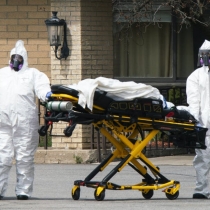

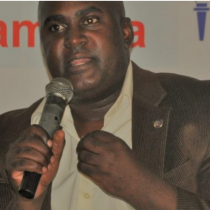

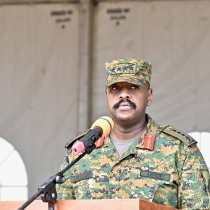
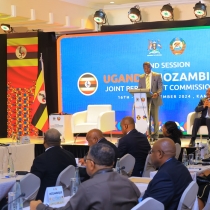
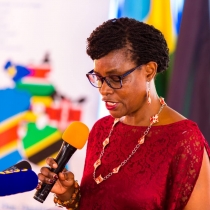
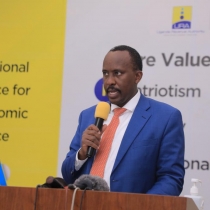

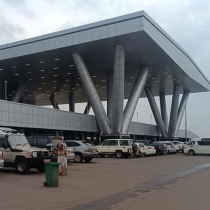
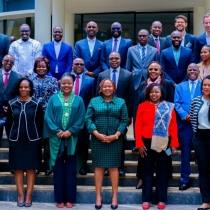







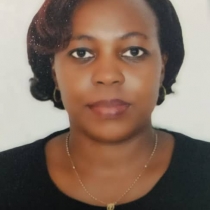





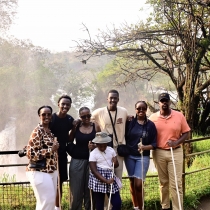





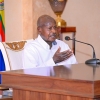





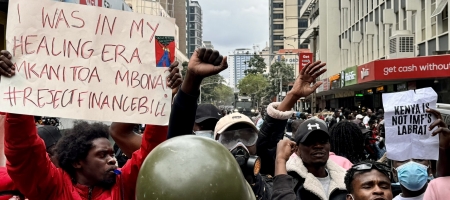




Join the conversation